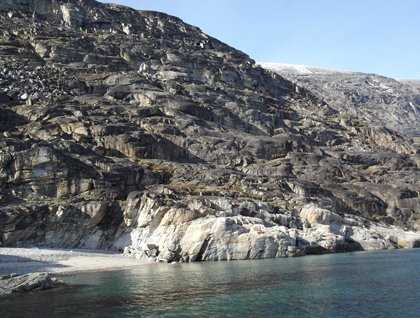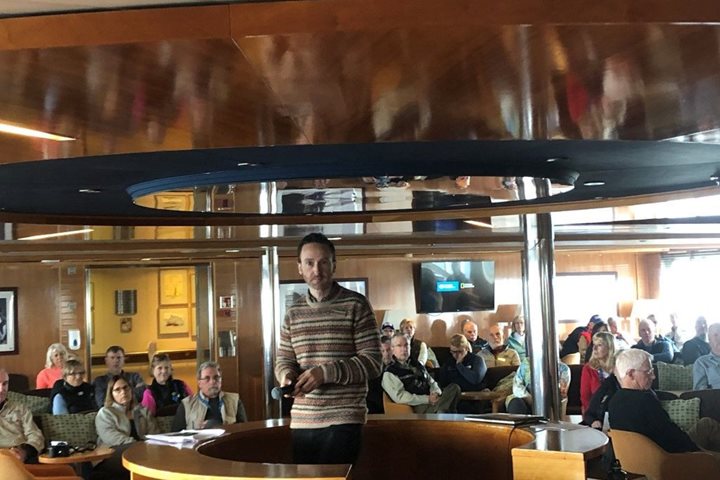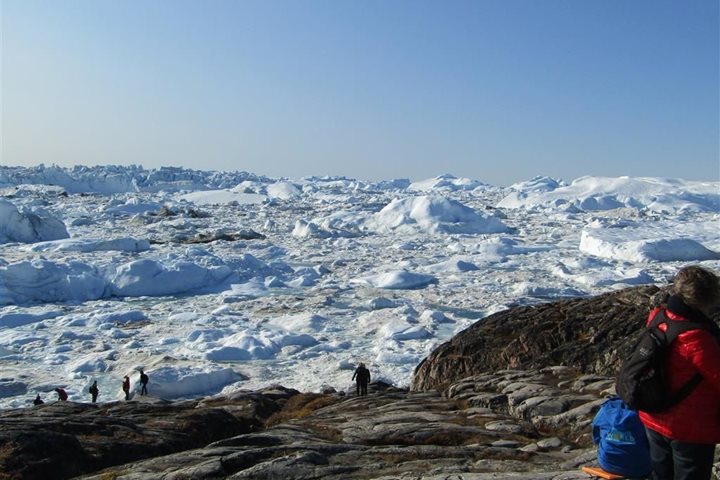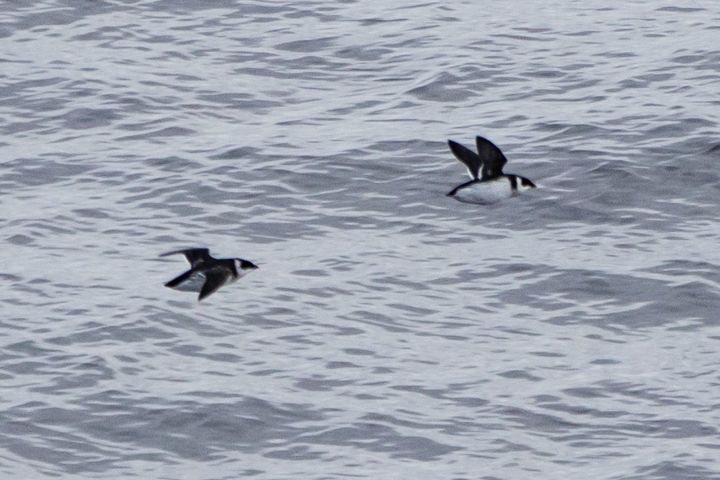Those of us who were up very early this morning were treated to a wonderful vision of full-moon-lighted icebergs and snow-capped mountains of Greenland. A little later, the vista was changed (neither improved nor degraded, just changed) by additional light from the sunrise. The rest of the morning was spent cruising through scattered gigantic icebergs as we made our way toward our first point of interest in Greenland … Qilakitsoq. This site is a beautiful, protected little bay, backed by a rocky, moss-covered slope that is surrounded by glacially smoothed metamorphic outcrops, which have been dated to nearly 3,000,000,000 years in age! (See Figure A.) Our main reason for coming here, however, was to view the remains of an ancient Thule winter settlement and sacred burial area. At first, it was difficult to make out the actual home sites and burial chambers, since there has been a lot of settling and overgrowth by grasses and mosses since the site was used, but once we were ashore and had a chance to explore among the boulders, they became evident. Qilakitsoq has given us one of Greenland’s most remarkable and important archaeological finds and it was made famous by the February, 1985, issue of National Geographic magazine (Vol. 167, No. 2).
It was here, in 1972, that a group of eight amazing mummies was found, although authorities were not able to examine the site until 1977. The bodies were found in two closely-related icy tombs constructed with rock slabs and have subsequently been dated to around 1475 AD (Figure B). Five of them were extremely well-preserved by being buried under a single rock, where they were partially exposed to a steady cold breeze that essentially freeze-dried them. These mummies, including three women stacked on top of each other with the body of a boy on top and a beautifully preserved doll-like baby on top of them all are now on display at Greenland’s National Museum in Nuuk. A nearby grave contained three more women that had been laid on top of one another. The site is extremely important to the understanding of Thule culture, the predecessor of modern-day Inuit, because the mummies in the graves were fully dressed with 78 pieces of clothing made from the skins of seals, caribou, and eiders, some of which displayed a remarkable sense of fashion. DNA analysis has indicated a close family relationship between several members of the group. The boy had features which may have been symptoms of Down Syndrome, and five of the six adult females bore faint facial tattoos. The baby may have been placed alive into the grave if its mother had died, as was customary in Inuit culture.
Another island, named Uummannaq, is located several miles away from Qilakitsoq and is now the main inhabited area of the region. Perhaps the world-famous mummies are ancestors of the people of Uummannaq. We did not visit the village, but we could see it as a colorful (mostly bluish) collection of modern wood frame houses scattered about on the lower, rocky slopes on the northwestern side of the island (Figure C). It was interesting to try to imagine life in this place … both in ancient times and modern times.
The rest of the day was spent at sea, as we made our way southward along the coast of Greenland. The scenery was spectacular, made all the more interesting by the occasional group of whales … both fin whales and humpback whales … and numerous artistically sculpted icebergs. It is always fun to try to figure out the history of an iceberg by analyzing previous water lines, refilled cracks, exposed eroded faces that had once been below the surface, and unconsolidated ice blocks and other debris on its top.







